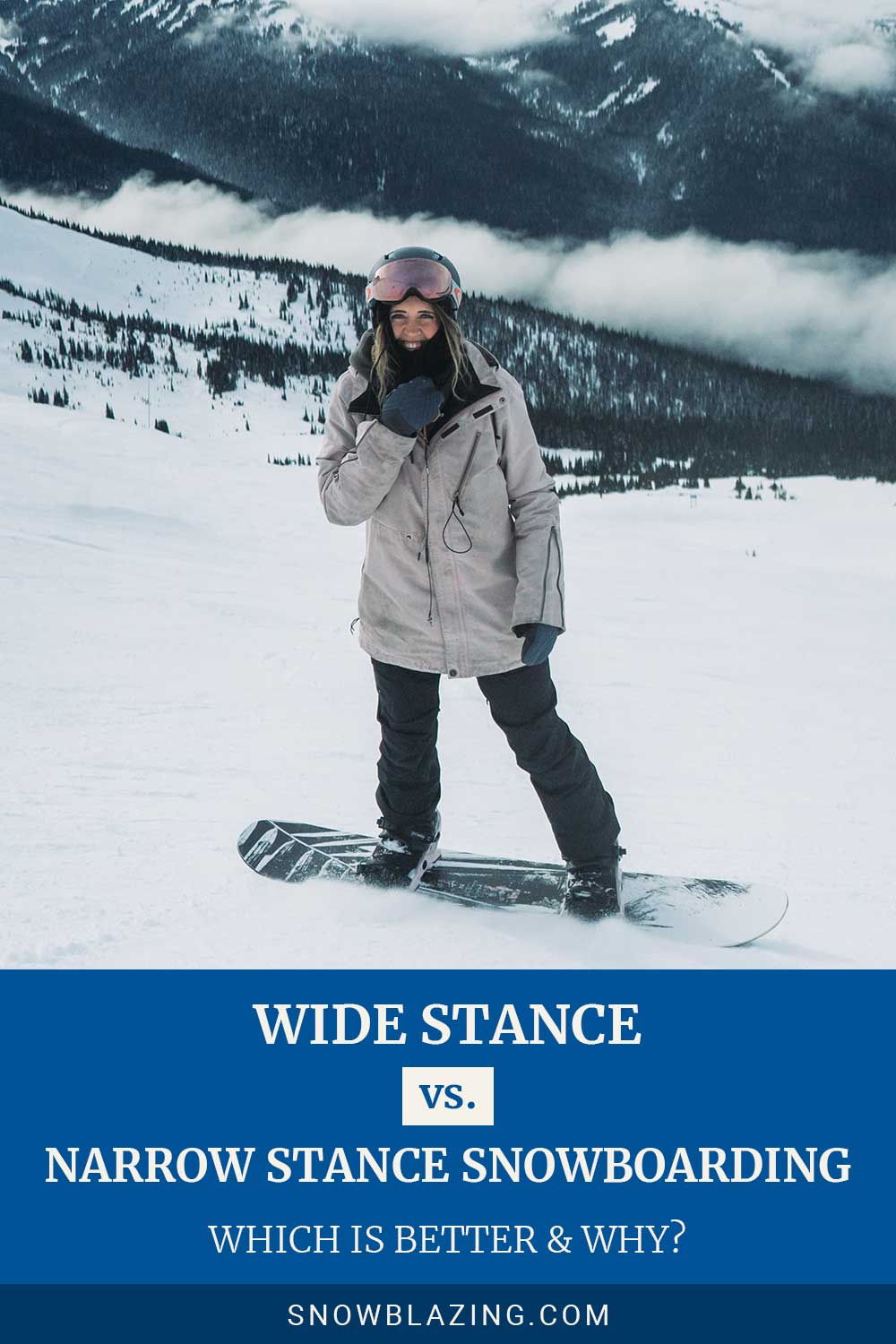Wide Stance vs. Narrow Stance Snowboarding – Which is Better & Why?
We may earn commissions for purchases made through links on our site. Learn more on our about us page.
Snowboarding has been around for thousands of years. However, the official invention of the “Snurfer” (aka the snowboard) happened in the mid-20th century.
Sherman Poppen was attempting to entertain his daughter and found a fun way for her to enjoy the snow by strapping two skis together with rope. From there, it took his wife, Mrs. Poppen, to bring the commercial idea to life.
It was not until the 1970’s that Tim Burton Carpenter created Burton Snowboards, the first to offer bindings to keep the feet of the rider secured to the board. The rest is history.

What is the difference between wide-stance and narrow-stance in snowboarding?
Narrow and wide are terms that describe the width between your feet on a snowboard. Are your feet wider apart or narrower? Too wide, and it will be too difficult to steer; too narrow, and the rider will have trouble balancing.
To start with, there are two ways to stand on a snowboard, regular and goody. Regular means you go down the hill with your left foot forward, Goofy being the right foot ahead.
Is it easier to snowboard with a wide or narrow stance?
Consider this: your stance depends on what gives you confidence when shredding the mountain slopes. Your foot placement should be slightly wider than shoulder-width apart.
Using this measurement will prevent the issue of maneuverability from being too wide and the loose and unstable footing when your feet are too close together.
Does your speed change depending on your wide or narrow stance while snowboarding?
Speed is more dependent on waxing, rider confidence, and slope conditions. However, there are three standard measurements to remember when setting up your board.
- Stance setback – “The distance that tells us how far back the center between the bindings is from the center of the snowboard.”
“Actually from the effective edge center of the snowboard, nose, and tail can be different lengths, but do not influence the effective edge center of the snowboard – zero stance setback or centered stance are good for turning and board control.”
- Stance width – “It is the distance between the centers of both bindings, and it simply tells… how far apart are your feet when you are strapped in.
It depends mostly on your height. The width should be roughly equal to the distance from the middle of your kneecap to the ground, or about 1 inch more than the width of your shoulders.
If you have chosen the right board for your length, you shouldn’t worry much about the stance width as it should be about the same as the distance between the default holes on the board.” Wide and Narrow are the two primary measurements.
- Stance Angles – “now is the final time to find out your stance type. Are you goofy or regular?… Most of the snowboarders are regular.
The three basic sub-categories are:
- Alpine – Downhill racing, Olympic and Professional.
- Forward – Default setting for most skis.
- Duck – Toes face inward, like ‘duck feet.’
Wide Stance vs. Narrow stance – which one is better for amateur snowboarding?
There is no definitive answer to this question. A rider’s stance depends on their size, and experts say beginners are better off using a narrow stance to begin.
Taller riders need a wider stance for stability, while shorter riders can play with narrower stances. The standard distance between the bootstraps would be about shoulder length apart.
What are the advantages and flaws of a wide stance?
Wider stances provide better stability and control over the nose and tail end of the board. Freestyle riding can add to better presses, more strength on the rail, and the wider sweet spot between your binding for grinding.
Flaws in using a wider stance; turning is more challenging for beginners and younger riders.
What are the advantages and flaws of a narrow stance?
A narrow stance is better for sharp turns, carving around trees, making that trick happen atop the half pipe, or pulling that 720 off a massive jump.
Then, of course, you must compensate for the less stable stance, but with that comes the ability to transition from obstacle to obstacle.
The biggest flaw of a narrow stance is the loss of stable footing. This could lead to more falls, coming loose on a turn, but the turning advantage is worth the risk.
Final thoughts on Wide Stance vs. Narrow Stance Snowboarding
When measuring the width between your bindings, use the rider’s shoulders as a reference. Most expert snowboards concur that this is the optimal foot position for beginners.
But, again, lean towards a narrower stance for better turning, a wider stance for better stability and control.


